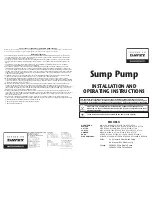
34
8.0
Engineering
8.1
Job Planning – A major consideration while
planning is the maximum protection of the
feeder plant network. Restriction of reentry
into the main feeder splice must be emphasized.
8.2
Moisture Protection – All MS2 module types
are available in either dry versions for pressur-
ized, vault or inside splice applications; encap-
sulated versions for moisture resistance in free-
breathing aerial splice closures; or in a dry ver-
sion with sealant box for maximum moisture
protection in non-pressurized PIC splicing
applications.
8.3
Fire Retardancy – All dry MS2 module types
are available in flame retardant versions for
vault and inside splice applicaitons. All fire
retardant MS2 modules meet UL Standard 94-
VO requirements and possess an Oxygen Index
of 28 or greater per ASTM Test Method D2863.
8.4
Rebuilding Existing Splices –
8.4.1 Reasons:
•
50% or more of the conductors require
rearrangement
•
Deteriorated splices
•
Discrete connector splices
•
Splices already partially converted
8.4.2 Disadvantages:
•
Costly
•
Time Consuming
8.4.3 Advantages:
•
Ability to plug and unplug
•
Improve life and usability of splice
•
Ease of maintenance
8.4.4 Special Considerations:
•
Inline splices require 10" to 12"
(254 to 305 mm) of slack for conversion
•
Without required slack, piecing out is
necessary
•
Piecing out requires additional modules in
splice, resulting in reduced splice capacity
in splice closure
•
Use proper symbols to fully identify all
splice points
Note:
If Rear Spring Holder is used, a minimum
of 6" (152 mm) of slack is required.
8.5
Rebuild Coding – Engineering, by chart com-
putation, will determine how many module
banks will be required to complete a specific
splice. Splice bank configurations and splice
types are listed on the work print at each splice
location according to a simple coding system.
This system tells the splicer what connectors
are required and what configuration the splice is
to be built in. It also indicates to the engineer
what flexibility the splice has for the future.
This coding is added to the cable records for
future reference.
S
–
Straight
F
–
Facility
J
–
Junction
L
–
Load
X
–
Non-standard
RN
–
Rebuilt needed
RC
–
Rebuild completed
Note:
Code always starts with a number repre-
senting the number of banks in a splice.
One of three configurations will be used.
Configuration
Splice Opening
Unilength
2 Bank
17" - 19"
19" - 21"
43.2 cm - 48.3 cm
48.3 cm - 55.3 cm
3 Bank
27" (68.6 cm) min
29" (73.7 cm) min
4 Bank
36" (91.4 cm) min
38" (96.5 cm) min
2FRC
2 Bank
3LXR
3 Bank
Load
Must be rebuilt
Non-standard
Facility
Rebuild Completed
Example 1:
Example 2:













































